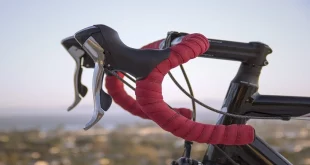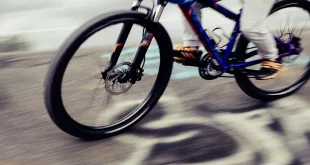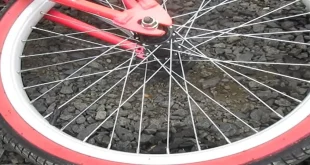Yes, it is possible to put cruiser bike handlebars on a mountain bike, but it may require modifications and adjustments to ensure compatibility and proper fitment. By making the necessary changes, riders can personalize their mountain bikes to have a more comfortable and relaxed riding position typically associated with cruiser bikes.
This modification can be done by swapping the current mountain bike handlebars with cruiser handlebars, adjusting the stem length and angle, and ensuring proper cable routing and brake lever placement. It’s important to consult with a bike mechanic or expert to make these adjustments safely and effectively.
Transforming a mountain bike with cruiser handlebars can enhance the riding experience for those who prefer a more upright position and relaxed ride.
Understanding The Difference In Handlebar Types
Are you considering swapping out your mountain bike handlebars for cruiser bike handlebars? While it may seem like a simple switch, it’s important to understand the differences between these two handlebar types before making any changes. In this section, we’ll explore the features and benefits of both cruiser bike handlebars and mountain bike handlebars.
Cruiser Bike Handlebars: Features And Benefits
Cruiser bike handlebars are known for their relaxed and upright riding position, providing a comfortable and casual riding experience. Here are some key points to consider:
- Swept-back design: Cruiser bike handlebars often have a swept-back design, allowing riders to maintain a more natural and relaxed posture.
- Wide grip area: The wide grip area on cruiser bike handlebars provides stability and control, making them ideal for leisurely rides and casual cruising.
- Comfort and leisure: These handlebars are designed for comfort and leisure, making them perfect for riders who prioritize a laid-back and enjoyable riding experience.
- Classic aesthetic: Cruiser bike handlebars have a distinct and timeless look, adding a touch of style to your bike.
Mountain Bike Handlebars: Features And Benefits
Mountain bike handlebars are designed to cater to the demands of off-road riding and aggressive trails. Here are the key features and benefits:
- Wide range of positions: Mountain bike handlebars offer a variety of hand positions, allowing riders to easily adapt to different terrain and riding styles.
- Sturdy and durable: Built tough to withstand the rigors of off-road riding, mountain bike handlebars are designed to keep you in control and handle the demands of rough trails.
- Better control and maneuverability: The wider handlebar design enhances control and maneuverability, giving riders the confidence to tackle challenging terrain.
- Compatibility with accessories: Mountain bike handlebars often have mounting points for accessories such as lights, gps devices, and action cameras.
Now that you understand the differences between cruiser bike handlebars and mountain bike handlebars, you can make an informed decision based on your riding preferences and needs. Whether you prioritize comfort and style or require the performance and versatility of mountain bike handlebars, the choice is yours.
Keep in mind that a handlebar swap may require adjustments to your bike’s components and professional installation is recommended for optimal safety and performance.
Assessing Compatibility
If you’re looking to upgrade your mountain bike’s handlebars, you might be wondering if you can swap them out with cruiser bike handlebars. While it’s not a common swap, it is possible to put cruiser bike handlebars on a mountain bike with a few considerations.
Assessing compatibility is essential to ensure a successful handlebar upgrade. Let’s explore the factors to consider when swapping handlebars and make sure you make the right choices.
Factors To Consider When Swapping Handlebars:
- Matching the handlebar diameter to the stem: One crucial factor to consider is the matching diameter of the handlebars and the stem. Mountain bike handlebars typically come in a standard diameter of 31.8mm, while cruiser bike handlebars usually have a larger diameter of 25.4mm. Swapping the handlebars would require either finding a stem with a compatible diameter or using a shim to adjust the fit.
- Evaluating handlebar width and grip length: Another important aspect to assess is the handlebar width and grip length. Cruiser bike handlebars tend to be wider and offer a more relaxed riding position, while mountain bike handlebars are narrower to accommodate tight maneuvers and off-road biking. Consider your personal comfort and riding style before making a decision. If you prefer a wider grip for a more relaxed ride, cruiser bike handlebars might be a suitable choice.
- Compatibility with shifters and brakes: Before swapping out handlebars, make sure to evaluate the compatibility with your existing shifters and brakes. Mountain bike handlebars are designed with specific mounting points for these components, and cruiser bike handlebars might not have the necessary provisions. Replacing shifters and brakes can be an additional expense and requires meticulous installation.
- Steering and control considerations: Lastly, keep in mind the impact of handlebar swaps on steering and control. Cruiser bike handlebars offer a more upright and comfortable riding position, which can affect steering responsiveness and control during technical mountain biking. It’s crucial to ensure that the chosen handlebars suit your riding preferences and maintain the level of control you desire.
By thoroughly assessing compatibility, you can determine whether swapping cruiser bike handlebars onto your mountain bike is feasible. Remember to consider factors such as handlebar diameter, width, grip length, compatibility with shifters and brakes, and overall impact on steering and control.
With careful consideration, you can find the perfect handlebars to enhance your riding experience.
Steps To Install Cruiser Bike Handlebars On A Mountain Bike
Have you ever wondered if you can put cruiser bike handlebars on a mountain bike? Well, the answer is yes! Installing cruiser bike handlebars on your mountain bike can provide a more comfortable and relaxed riding experience. But how exactly can you go about doing this?
Let’s break it down into a few simple steps.
Gather The Necessary Tools
Before you begin the installation process, make sure you have the following tools on hand:
- Allen wrench set
- Adjustable wrench
- New cruiser bike handlebars
- Grips (if not included with the handlebars)
- Cable cutters (if required for your specific bike)
Remove The Current Handlebars And Grips
The first step is to remove the existing handlebars and grips from your mountain bike. Here’s how:
- Loosen the bolts on the stem that secure the handlebars in place using an allen wrench.
- Slide off any grips or bar tape that may be covering the handlebars.
- Carefully remove the handlebars from the stem.
- Take off the grips, if they’re not already removed, by cutting them off with a sharp knife or using compressed air to loosen them.
Install The Cruiser Bike Handlebars
Now it’s time to install the new cruiser bike handlebars onto your mountain bike. Here’s what you should do:
- Position the new handlebars onto the stem, ensuring they are straight and aligned with the front wheel.
- Tighten the bolts on the stem using an allen wrench until the handlebars are securely in place.
- If the new handlebars did not come with grips, slide on the new grips and make sure they are positioned to your liking.
Adjust The Handlebar Position And Alignment
Once you have installed the cruiser bike handlebars, it’s important to make any necessary adjustments to ensure proper positioning and alignment. Follow these steps:
- Sit on your bike and grasp the handlebars to get a feel for their position. Make sure they are comfortable and allow for easy maneuvering.
- If needed, adjust the handlebars by loosening the bolts on the stem and moving them forward, backward, up, or down until you find the perfect fit.
- When you’re satisfied with the positioning, tighten the stem bolts securely to keep the handlebars in place.
By following these steps, you can easily install cruiser bike handlebars on your mountain bike and enjoy a more relaxed and comfortable riding experience. So go ahead, give it a try and hit the trails with a new handlebar setup.
Tips For A Successful Conversion
If you’re looking to switch up the handlebars on your mountain bike, you might be wondering if it’s possible to put cruiser bike handlebars on it. The good news is that it can be done! With a few adjustments and some careful considerations, you can transform your mountain bike into something more comfortable and versatile.
In this section, we’ll provide you with some valuable tips for a successful conversion.
Test The Handlebar Height And Adjust Accordingly
Before making any changes, it’s crucial to test the handlebar height and ensure it suits your riding style and comfort preferences. Here’s how you can do it:
- Start by loosening the stem bolts that secure the handlebars to the stem.
- Adjust the handlebar height by gradually raising or lowering it based on your comfort level.
- Once you’ve found the desired height, tighten the stem bolts to secure the handlebars in place.
Ensure Proper Cable And Housing Routing
When swapping out your mountain bike’s handlebars for cruiser bike handlebars, it’s important to ensure that the cable and housing routing is done correctly. Here’s what you need to keep in mind:
- Begin by removing the old handlebars and carefully detach the cables and housing from them.
- Route the cables and housing through the new handlebars, making sure they are properly aligned and secured.
- Double-check that there are no kinks or tangles in the cables or housing before proceeding.
Check The Brake Lever And Shifters Compatibility
Before finalizing the handlebar conversion, it’s crucial to check the compatibility of the brake levers and shifters. This step will ensure that the new handlebars can accommodate the existing components. Here’s what you should do:
- Inspect the brake lever and shifter setup on your current handlebars.
- Compare them to the new cruiser bike handlebars and check if they are compatible.
- If they are not compatible, you might need to purchase new brake levers and shifters that fit the cruiser bike handlebars.
Remember, while putting cruiser bike handlebars on your mountain bike can provide a more comfortable and relaxed riding position, it’s important to make these changes carefully and consider all the necessary adjustments. By following these tips, you’ll be on the right track to successfully converting your mountain bike’s handlebars.
Safety Precautions And Considerations
Are you wondering if you can put cruiser bike handlebars on a mountain bike? Well, the answer is both yes and no. While it is technically possible to swap out the handlebars, there are a few safety precautions and considerations you need to keep in mind before making the switch.
Let’s explore these factors in more detail.
Properly Tightening All Bolts And Fasteners
Before you start enjoying your new handlebars, make sure you properly tighten all the bolts and fasteners. This is crucial for ensuring the stability and safety of your bike. Here’s what you need to remember:
- Use a torque wrench to tighten the bolts to the recommended specifications provided by the manufacturer.
- Double-check that everything is secure and snug before taking your bike out for a ride.
- Regularly inspect the bolts and fasteners to ensure they remain tight over time.
Test The Handlebars For Stability And Comfort
Now that you have the handlebars in place, it’s important to test them for stability and comfort. Here’s what you should do:
- Take your bike for a test ride in a controlled environment before hitting the trails or roads.
- Pay attention to how the handlebars feel while riding at different speeds and under various conditions.
- If the handlebars feel unstable or uncomfortable, consider making adjustments or seeking professional advice.
Ride With Caution And Monitor The Bike’s Handling
Once you’re satisfied with the handlebar setup, it’s time to hit the road. However, it’s crucial to ride with caution and keep an eye on how your bike handles with the new handlebars. Here are a few tips to keep in mind:
- Start with shorter rides in familiar areas to get accustomed to the new handling dynamics.
- Pay attention to any changes in steering responsiveness or stability.
- If you notice any issues, such as difficulty maintaining control, consult a professional to assess the situation.
Remember, safety should always be your top priority when modifying your bike. By properly tightening all bolts and fasteners, testing the handlebars for stability and comfort, and riding with caution while monitoring the bike’s handling, you can enjoy the benefits of cruiser bike handlebars on your mountain bike while minimizing any potential risks.
Exploring The Benefits And Drawbacks
If you’re a passionate cyclist who loves to explore different terrains, you might be wondering if it’s possible to put cruiser bike handlebars on a mountain bike. While it may seem like an unusual combination, there are both benefits and drawbacks to consider.
Pros Of Using Cruiser Bike Handlebars On A Mountain Bike
- Increased comfort: Cruiser bike handlebars are designed to provide a more relaxed riding position, with a wider grip and a more upright posture. This can be beneficial for longer rides or leisurely cycling, as it reduces strain on your back, shoulders, and wrists.
- Enhanced stability: The wider handlebars on a cruiser bike can offer better stability and control, especially when riding on straight paths or cruising at a moderate speed. This can be advantageous for beginners or those who prefer a more stable and predictable riding experience.
- Better visibility: The upright riding position provided by cruiser handlebars allows for better visibility of the surroundings. This can be particularly useful if you enjoy cycling in urban areas or places with heavy traffic, as it gives you a better view of the road ahead and improves your overall safety.
Cons Of Using Cruiser Bike Handlebars On A Mountain Bike
- Limited maneuverability: The wider grip of cruiser handlebars can restrict your ability to navigate tight turns or maneuver through narrow spaces. This can be a significant drawback if you regularly ride on technical trails or enjoy challenging downhill descents that require quick and precise handling.
- Reduced aerodynamics: Compared to the more aggressive and streamlined position offered by mountain bike handlebars, cruiser handlebars create more wind resistance. This can negatively affect your speed and efficiency, especially if you often ride on flat or open terrains.
- Compatibility issues: Switching to cruiser handlebars might require modifications to your mountain bike’s stem, brake and gear shifters, and cables. Depending on the specific setup, this could result in additional expenses and potentially impact the overall functionality of your bike.
It’s important to carefully consider your cycling preferences and the type of terrain you primarily ride on before deciding to put cruiser bike handlebars on your mountain bike. While they can provide enhanced comfort and stability, they may not be suitable for more technical rides that require agility and maneuverability.
Ultimately, the choice rests on finding the right balance between personal comfort and the specific demands of your cycling adventures.
Conclusion
To sum up, it is possible to put cruiser bike handlebars on a mountain bike, but it may require some modifications and adjustments. Cruiser bike handlebars offer a more relaxed and upright riding position, which can be comfortable for leisurely rides or commuting.
However, they may not be suitable for intense trail riding or aggressive downhill biking. Before making any changes, consider your riding style and the type of terrain you frequently encounter. It is crucial to ensure compatibility between the handlebars and your mountain bike’s stem diameter, as well as compatibility with the brake and gear systems.
Seek professional advice or consult a bike mechanic to make sure the changes are done correctly and safely. Remember, altering your bike’s handlebars may affect the overall bike geometry and handling characteristics, so be prepared for potential changes in control and stability.
Take the time to test and adjust the handlebars until you find the most comfortable and suitable setup for your needs.
 CommutingLife Explore The World On Two Wheels
CommutingLife Explore The World On Two Wheels





